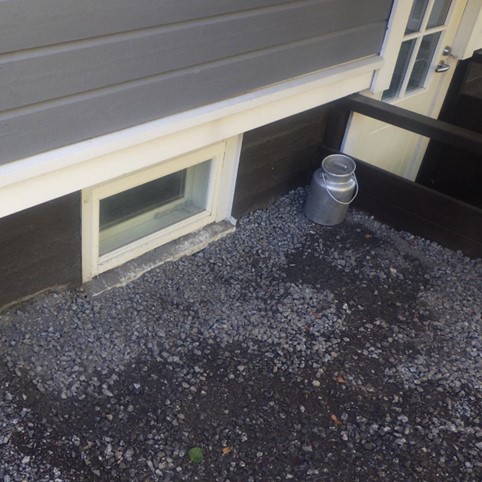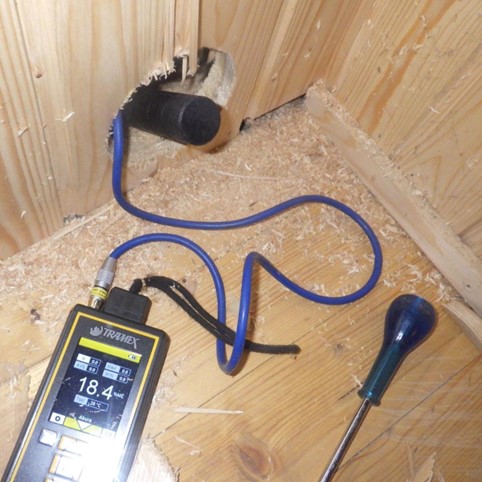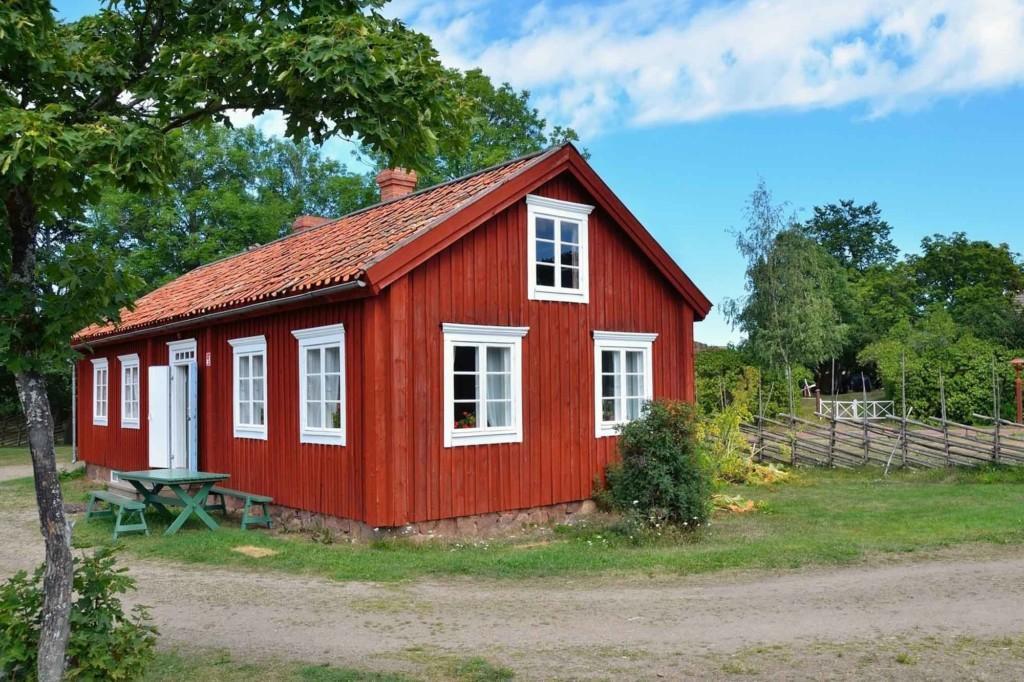A wall in contact with the soil that is insulated from the inside is a typical structural solution in houses with a basement
Walls in contact with the soil that are insulated from the inside were commonly built in the 1960s and 1980s, for example. The wall structure has also been used in detached houses built in the 1950s for the families of soldiers who fought at the battlefront in WWII when the intended use of the basement floor has been changed afterwards.
If moisture enters the wall structure from the outside, the thermal insulation laid against the wall and timber structures can be damaged. In addition, water vapour from the indoor air can condense at the interface between the aggregate wall in contact with the soil and the thermal insulation.
An exterior wall in contact with the soil is a high-risk structure
A high-risk structure refers to a type of structure which has been found in practice and based on structural surveys to be highly susceptible to damage. The structure usually complied with the building regulations and guidelines valid at the time when it was built, and the susceptibility to risk was not recognised until at a later point in time.

A wall with thermal insulation on the inside that is in contact with the soil is a high-risk structure.
An exterior wall in contact with the soil with thermal insulation on the inside has a supporting structure made from timber or another material on the inside. Typically, such a structure can be found in the basement of a building.
Structural timbers are also often found at sites where there are elevation differences between the floors. In such a case, the part in between the floors is most likely in contact with the soil.
“Identifying this structure is quite easy,” says Kim Malmivaara, Chief Business Officer at Raksystems and condition inspection expert.
“If you have the drawings at your disposal, the markings show the building blocks and the structural element inside them. If there are no drawings, you can knock on the wall and listen to find out whether there is stone behind the wall or whether it sounds like a wooden structure,” Malmivaara continues.
A wall structure in contact with the soil is common in houses built in the 1950s
In recent years, Raksystems has found in its Housing Trade Condition Evaluations a wall structure in contact with the soil with thermal insulation on the inside in 15% of the inspected buildings. Such a structure has been most often observed in houses from the 1950s: repairing the structure or renovating it has been recommended in up to 46% of these cases.
Of all the wall structures in contact with the soil with thermal insulation on the inside observed by our inspectors, repairing or renovation has been recommended for about 40%.
Risk of damage from the exterior and interior of the building
When you are dealing with a wall that is in contact with the soil, there is a risk of moisture from the soil entering the structure. The most common causes are an ineffective underdrainage system and too fine-grained artificial fill, which allow moisture to enter the structures by means of capillary action.
Furthermore, poorly implemented rainwater drainage, deficiencies in the waterproofing of the foundation wall or defective ground inclination can cause moisture from the soil to accumulate at a corner of the wall, increasing the risk of structural damage. The key is that no moisture should be able to enter the structure from the outside.
Another cause of damage and risk to a wall structure is indoor moisture. Damage mechanisms are triggered if moisture from the indoor air enters the structure and condenses at the interface between the aggregate wall that is in contact with the soil and the thermal insulation.
Such damage can occur quickly. On the other hand, even a small amount of moisture at a favourable temperature can lead to major damage over a long period of time.
“The 1980s was the golden age of such timber studwork walls. The structure is still in use, though. Inspections reveal these structures, particularly from renovations where wooden sheds and basements have been converted to residential use. You could say that if a building has a basement, you are likely to find this high-risk structure in some form or another,” says Malmivaara.
How to start solving the problem?
A timber studwork wall must always be inspected. Opening the structure is the easiest way to find out whether there is damage.
The presence of structural timbers does not always mean that the structure is damaged, but the risk is always there. If the risk has been realised and the structure is damaged, the extent of the damage should be determined.
In addition to determining the extent of the damage, it is important to determine the causes of the damage so that the structure can be made functional. It is always a good idea to draw up a repair plan. In most cases, the causes of damage are found both on the outside and inside. In such a case, repairs will have to be carried out on both the interior and exterior of the building.
Exterior repairs usually involve repairing or replacing the weeping drains, foundation wall waterproofing, ground inclination and rainwater drainage. It is a good idea to add thermal insulation on the outside as well, as it will make the structure more functional in a physical sense.
On the inside, ventilation can be improved and the structure can be made ventilated so that moisture from the indoor air will no longer be able to condense in the structures. The interior repair needs are also dependent on the intended use of the premises to some extent.
What is a high-risk structure?
A high-risk structure refers to a type of structure which has been found in practice and based on structural surveys to be highly susceptible to damage. The structure usually complied with the building regulations and guidelines valid at the time when it was built, and the susceptibility to risk was not recognised until at a later point in time. As a result, the structure is no longer used.
Typically, damage to high-risk structures is caused by moisture entering the structure, either through the soil from the outside or from the indoor air in the form of water vapour. An example of a commonly observed high-risk structure is a false plinth.
The condition of the high-risk structure, i.e. whether the risk has been realised, should always be investigated. This is usually possible only by opening the structure.






